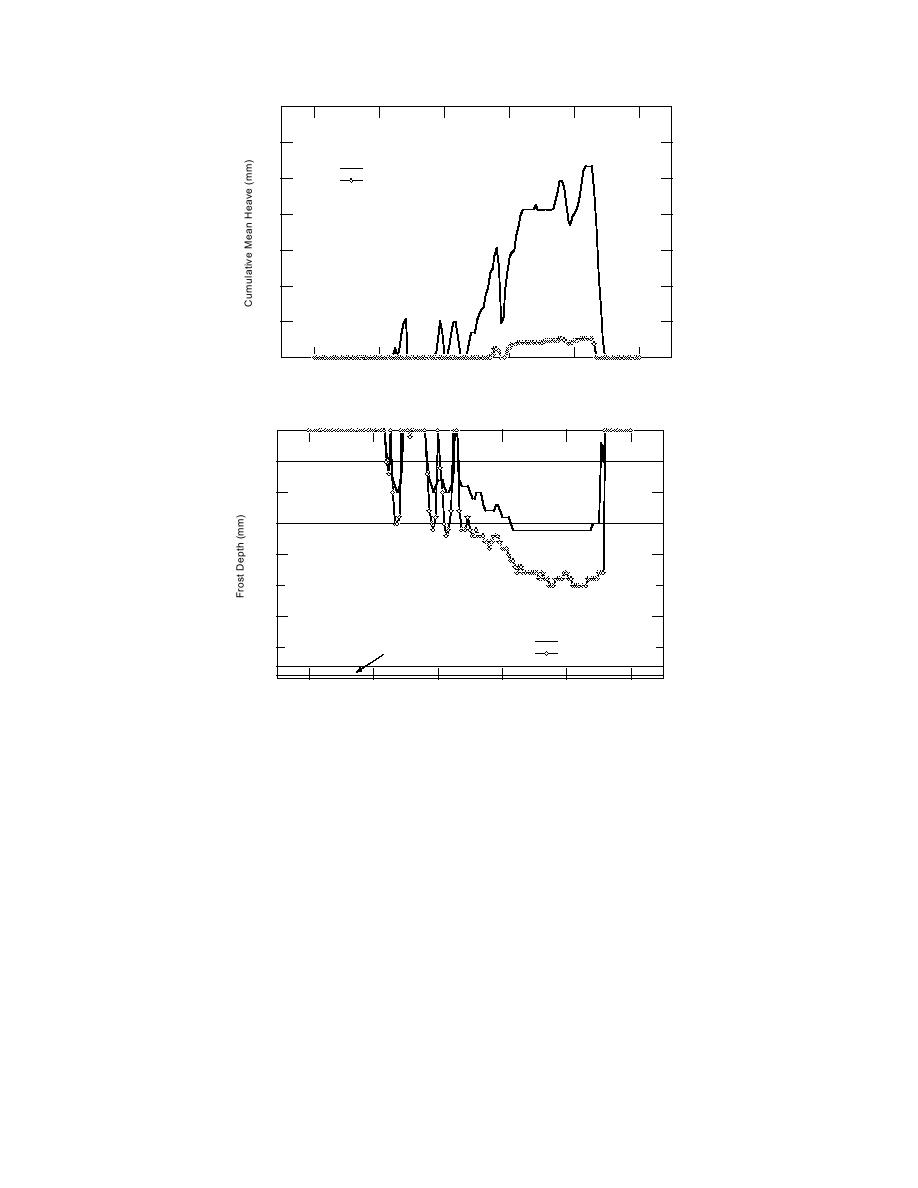
70
Water Table Depth
60
Below Pavement Surface:
100 mm
50
2740 mm
40
30
20
10
0
1 Nov
1 Dec
31 Dec
30 Jan
1 Mar
31 Mar
Figure 16. FROST prediction of cumulative mean heave--460-mm subbase layer.
0
Asphalt Concrete
Graded
Aggregate
200
Base
400
Tilcon Common
Granular Fill
Material
Water Table Depth
600
Below Pavement Surface:
100 mm
Geosynthetic Liner Materials
2740 mm
800
1 Nov
1 Dec
31 Dec
30 Jan
1 Mar
31 Mar
Figure 17. FROST prediction of frost penetration--460-mm subbase layer.
560-mm graded aggregate base thickness
created to see how great an effect a reduced sub-
The results of the simulation using 560 mm of
base thickness would have on frost heave and
graded aggregate base estimated that no frost
penetration. The input and output files for both
heave would occur under in-situ conditions. The
moisture contents are included in Appendices D
results using a saturated structure show that the
and E in Internal Report 1179. Results for the pre-
estimated frost heave is 61 mm (Fig. 18). Frost
dicted frost heave are given in Figure 16. For frost
penetration, under in-situ conditions, is esti-
heave, decreasing the thickness of the Tilcon ma-
mated to reach 680 mm. This depth reaches into
terial layer containing a moist soil increased the
the very top of the subgrade. For the saturated
amount of expected frost heave to 5.1 mm. Even
conditions, the frost depth only reaches 280 mm
with this increase, the frost heave is still classified
(Fig. 19). This frost depth is 40 mm less than either
as low. For the saturated soil, the predicted
of the first simulations. Appendices F and G in
amount of frost heave was 53 mm.
Internal Report 1179 contain the input and output
Even with a decrease in the Tilcon layer of
files for this simulation. Table 9 provides a sum-
180 mm, frost penetration remained the same.
mary of the computer simulations.
Estimated frost depths were 500 mm for a moist
Table 9 illustrates that a reduction in frost
soil and 320 mm under saturated soil conditions
heave occurs when a thicker aggregate base layer
(Fig. 17).
composed of relatively non-frost-susceptible
12




 Previous Page
Previous Page
